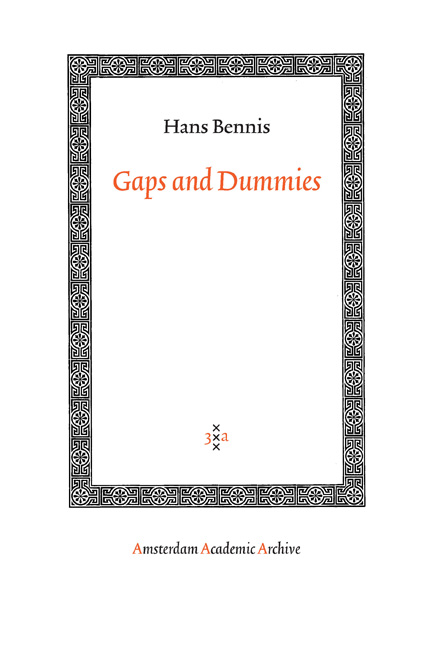Summary
Introduction
In this chapter I shall pursue some of the implications of the theory presented in the previous chapters. In the first few sections I shall basically be concerned with two theoretical issues. In the later sections I shall discuss the implications of the theory for several other languages. Although the two parts of this chapter are closely related, it is less homogeneneous than the preceding ones. It will also be rather sketchy, since it is impossible to discuss the distribution and properties of gaps and dummies in other languages in just as much detail as in Dutch. I shall provide some indications in which direction an explanation consistent with the theory developed above might be found.
In section 2 I shall discuss the rule of adjunction once more and argue that the theory of paths severely constrains the possibility of application of adjunction, whereas no such limitations apply to substitution.
Section 3 deals with the notion external argument. The question here is what the external argument is external to. There are basically two possible answers to this question. Either it is external to the maximal projection of the category assigning the external argument, or it is external to the argument projection of the Q-assigning head. The first option is defended in recent work by Williams, whereas the second view is present in work by Stowell and Chomsky. I Shall defend the most restrictive option, i.e. that the external argument should not only be external to the argument projection but internal to the maximal projection of the category assigning the external Q-role as well. Although such a view is relatively inconsequential for the analysis of Dutch, it has far-reaching consequences with respect to languages like English and Italian.
In what follows I shall discuss consequences and problems with respect to a number of languages. It will turn out that the theory is able to account for a number of problems in an interesting way. However, several problems cannot be satisfactorily accounted for. Given the rather tentative characteristic of this chapter, I shall leave these questions for further research.
- Type
- Chapter
- Information
- Gaps and Dummies , pp. 259 - 328Publisher: Amsterdam University PressPrint publication year: 2005



